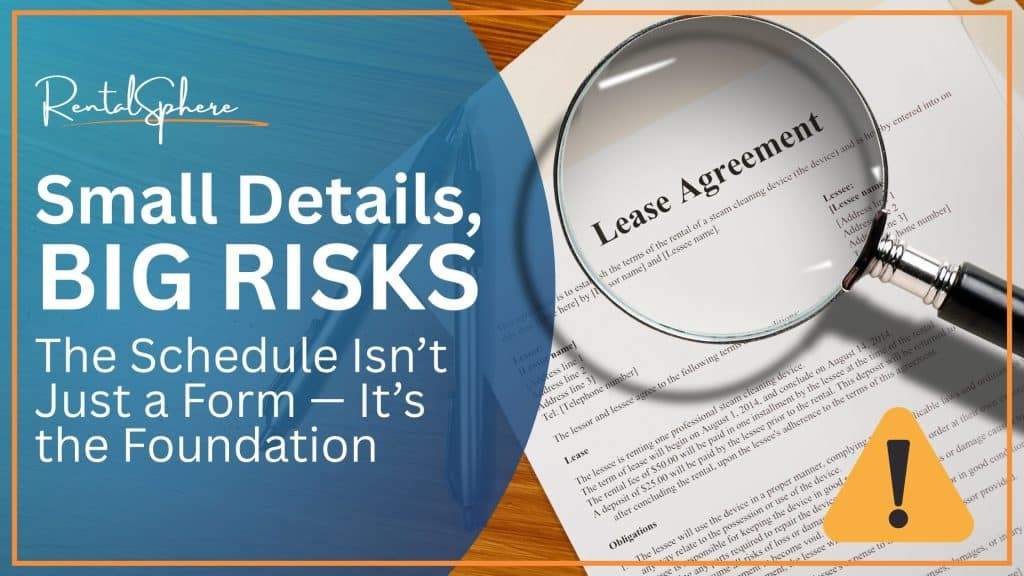In the world of residential rentals, the lease agreement is often seen as a static, boilerplate document. But for seasoned professionals, it’s clear: the schedule to the lease is where it all starts — and where things can go dangerously wrong. Part one of our recent webinar series, hosted for a national brand, dove into this overlooked section and revealed why every property practitioner should treat it with the seriousness it deserves.
The Schedule Isn’t Just a Form — It’s the Foundation
Too many agents treat the lease schedule like a routine checklist: fill in names, dates, and figures, and move on. But that “form” is integrally linked to the rest of the lease agreement. It determines how key clauses apply, sets timelines in motion, and defines formal communication protocols. Mistakes or omissions here don’t just look sloppy — they can make breach notices legally void, and in the worst cases, expose agents to liability.
The Hidden Risks of “Software-Only” Updates
Modern rental software makes it easy to update tenant details. But here’s the catch: if you update an email address in your system and not in the actual lease or via a formal addendum, your notices could be nullified. A valid breach notice, sent to an “updated” email address, may be unenforceable if the lease still references an old one. This simple misstep leads to delays, lost income, and unnecessary costs — all of which could land at the agent’s feet.
Understand Suspensive Conditions — Or Pay the Price
Many practitioners overlook the implications of suspensive clauses — such as requiring the deposit to be paid before the lease becomes valid. If not properly completed or understood, this can create a grey area where a lease appears binding even though the tenant hasn’t fulfilled key conditions. Without clarity, landlords may lose the right to place another tenant promptly, and agents can be left in the middle of a legal mess.
You’re Expected to Be the Expert
The legal framework in which leases operate isn’t optional. Agents are expected to understand how the Rental Housing Act, Property Practitioners Act, Consumer Protection Act, and Unfair Practice Regulations all work together to shape lease terms. A poorly completed lease schedule isn’t just a rookie mistake — it’s a failure in professional compliance.
A Final Word: Check, Cross-Reference, Update
The schedule to the lease is not a throwaway page — it’s a legally binding structure that shapes the entire lease. Property practitioners must:
✅ Cross-reference every input in the schedule with the related clauses.
✅ Ensure updates (like contact details) are formalised in writing.
✅ Understand the legal implications of each field completed.
Taking shortcuts might seem efficient today — but they can lead to disaster tomorrow.
Need This Training For Your Team or Brand?
To arrange in-house or brand-specific training on this topic, please message Shaun directly:
📱 WhatsApp: 071 306 1202
📩 Email: shaun@rentalsphere.co.za
🔐 Want to Stay Ahead of the Game?
Join our Inner Circle to get access to live deep dives, toolkits, and rental law unpacked for real-world use:



